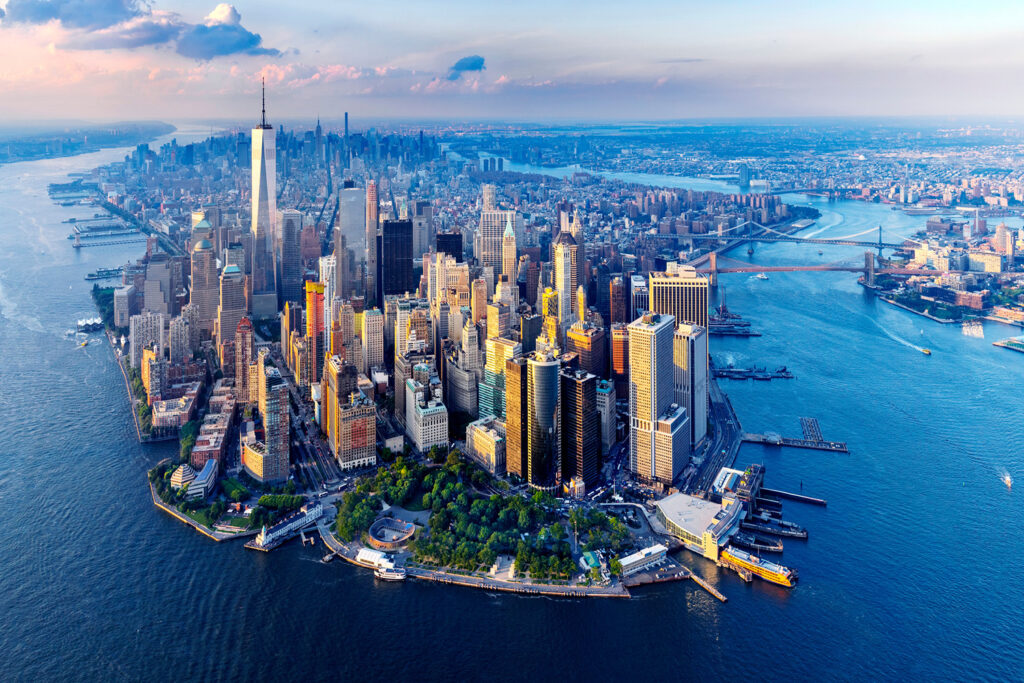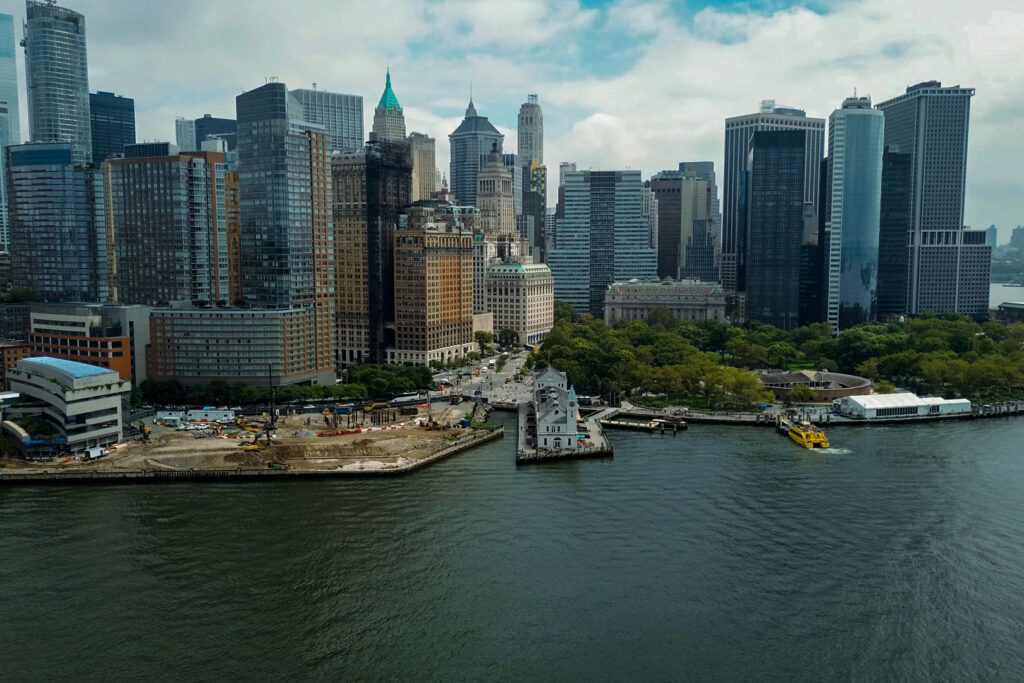AI at the heart of building design
Engineering Services Director, Christopher Wodzicki, examines how the building design industry is embracing advanced digital technologies and, in particular, artificial intelligence

Few cities have experienced such rapid transformation as Dubai over the last two decades. The emirate has literally risen from the sand to become a global business hub and an attractive destination for top talent from around the world.
Dubai’s skyline is now peppered with iconic buildings of all shapes and sizes as the boundaries of design, engineering and construction have been pushed ever higher. The emirate can boast a series of world records: the tallest building (above), the highest hotel, the largest man-made island… It is an architects’ playground, where the cutting edge of innovation is rarely more than a few steps ahead of the mainstream.
Dubai is an architects’ playground, where the cutting edge of innovation is rarely more than a few steps ahead of the mainstream.
A remarkable new landmark is currently taking shape alongside Sheikh Zayed Road, adjacent to Jumeirah Emirates Towers. On launch in 2019, the Museum of the Future will be an incubator of ideas, a catalyst for innovation and a global centre for inventors and entrepreneurs, rather than a showcase for ancient artefacts.

Standout structure
The building has an unusual torus form, which makes it stand out from the skyscrapers around it. Its stainless steel and glass fibre reinforced polymer exterior will feature Arabic poetry written by HH Sheikh Mohammed bin Rashid Al Maktoum represented in 3D on the silver facade.
But that’s not the only thing that marks this project unusual: initial cues of artificial intelligence (AI) were used to find the optimum geometric solution for the curved structure.
As the lead consultant on the project, experts from Buro Happold developed inhouse computational algorithms, with a fixed set of physical parameters, to realise the profile of the diagonally intersecting steel structure of the Museum of the Future, Dubai.
This basically meant ensuring that the length and spacing of the frame elements were optimised to reduce the proximity of the adjacent nodes, while still following a set of fitness criteria, namely making sure there were nodes at each floor plate and the local stresses within each element did not exceed a given material capacity.
By ‘teaching’ the algorithm to identify the more favourable scenarios, the tool was able to generate a series of efficient options for the structure to achieve the building’s iconic shape. Without computer-aided intelligence, we may never have derived an optimal geometric solution, and would probably still be designing now, rather than watching the structure being built.
The Museum of the Future puts Dubai at the forefront of cutting-edge design and reflects the enormous changes taking place in the building industry, as in all sectors of the economy, as we begin to explore the possibilities offered by rapidly evolving technology.
The structure’s design suggests that AI will push the limits of what’s achievable and that building design will become even bolder, continuing the evolution we have already seen in recent decades as an expanding material palette and computer technologies have enabled us to move away from rectilinear buildings.

Building for the future
The biggest game changer in the last decade has been the advent of 3D Building Information Modelling (BIM), which allows us to create a virtual building prior to construction. AI is set to evolve from BIM, by enhancing the overall design process and further improving the outcomes.
BIM is a data repository for the built environment. It records information about everything that goes into a building’s design: the materials, the architectural and mechanical objects, the ducting and piping, the position of every last nut and bolt. BIM is the natural precursor to AI, which thrives on taking data like this and interpreting it.
Several years ago, Dubai Municipality mandated the use of BIM for most large-scale projects in the emirate, so already a wealth of building information data exists, which, combined with the opportunity to data mine the older structures, means the city is well positioned to benefit from the opportunities created by this new wave of advanced digital technology.
By exploiting the various data sets, AI will be able to compare how buildings perform
There are also more and more smart buildings in existence in Dubai – buildings fitted with sensors that report their performance in real time. All of this information is rich material for AI to interpret. By exploiting the various data sets, AI will be able to compare how buildings perform, the energy and water they consume, how they move, what temperature the rooms are being conditioned to, and a host of other metrics, assessing the outcomes of the different solutions used and then, based on those findings, it can inform and refine the design for the next project.
Moving forward
The building design industry is only just waking up to the potential of AI and so for the most part, it is currently still being used in its simplest form to complete specific repetitive tasks, rather than being applied to the entire architectural design.
Finding opportunities for efficiency is the starting point for AI in our industry, as improved efficiency generates quality. And with quality comes the reproducibility of a process, leading to automation, which ultimately can give you a better and higher-quality product. These fundamental principles can then be expanded to more complex problems, allowing AI to work beyond the limits of our natural intelligence. This could involve very abstract problems that are perhaps too difficult to describe and resolve using conventional theories and strategies.
The more complex the task the more appropriate the use of AI. It is a question of framing the problem, being able to identity from where the data required can be found, what the fixed parameters are, and being able to define what it is you are trying to solve. Access to these basic ingredients enables AI to solve the complex challenge.
Does this mean the role of the architect will become redundant in the future? Far from it.
Architecture is about more than selecting a building from a catalogue. It is a significant investment in terms of time and money with an expectation of serving a design life of 50 years, at least from a physical perspective. Every design needs a built-in resilience to respond to the ever-changing environment and the individual client’s aspirations. Architects manage this information and find the synergies between the built environment and the human behaviours that occupy them. AI can support and enhance that process by creating meaningful information on which to base the design. The likes of WeWork, the American company that provides shared workspaces for technology startups, have discovered this and are already disrupting the conventional design principles of workspace environments.
The irony perhaps is that AI will perfect a design to the extent that every parameter is set to achieve the highest efficiency and this would likely make it conclude that the most optimised solution to a building is a box. Therein lies the nuances of architecture, to allow a variety of options capable of solving the same problem but distinguished by subjective opinions and manifested through the human input. Design is more than an output, but rather a process that endures over the course of the project’s life.

Perfect imperfections
It is the human contribution that is the most interesting aspect in architecture; this means being able to connect all the parameters and even defend the flaws within the efficiency of a building’s design. These trade-offs are the distinctions that cause specific architecture to appeal to humans, much in the same way art is a personal experience. AI will struggle to capture the human sentiment embodied within architecture.
Where we will see AI really come into its own is in informing design through meaningful and organised data. Real-time video feeds are already being analysed with AI to optimise visitor circulation in museums and to improve the spatial design of office layouts. But just think of the impact such techniques could have if one were able to further extract meaningful data and apply it on all building types or else on a much bigger scale, on a community or city level: that is when AI becomes exciting.
Imagine, for example, you have a camera on every street corner capturing people’s patterns and behaviours in response to their immediate surroundings as they move around; measuring whether they are relaxed and calm, or whether they are stressed and anxious. The process of accurately associating these emotions to actual opinions on design could be used to inform social sentiment around the built environment to create much better public spaces.
Executed on a large-scale this could have a transformative effect, making cities much happier places by providing us with actual performance-based designs. The environment in which we live would improve, as would the quality of our lives. I look forward to those days with great enthusiasm.





